Why Lab Safety and Equipment Matter for AP Success
There’s a quiet confidence that comes from walking into a lab that’s prepared: tools in the right place, safety signs visible, and predictable procedures that let you focus on the science rather than the logistics. For students taking AP science courses—Biology, Chemistry, Physics, Environmental Science—this confidence can translate directly into better learning, stronger lab skills, and more compelling evidence of mastery on assessments and portfolios.
Parents and teachers, this guide is for you too. Aligning your school board’s lab supplies and safety policies with AP expectations ensures students meet course audit criteria, complete required investigations, and enter exams with practical experience. Below we’ll walk through what boards typically need to provide, what AP courses expect, how schools can build clear equipment lists, and practical safety practices that keep everyone learning safely and effectively.
Big Picture: How AP Course Requirements Tie into Lab Resources
AP courses are designed to mirror introductory college-level coursework. That means labs aren’t optional extras—they’re essential. AP course descriptions and lab manuals emphasize guided inquiry, evidence-based reasoning, and the ability to design, carry out, and analyze experiments. To support those skills, schools must supply not just chemistry sets or microscopes, but an environment where students can safely explore, make mistakes, and iterate.
Think of the relationship like a sandwich: the curriculum is the filling, instruction and assessment are the layers, and the lab resources are the bread that holds everything together. Without the right resources, the sandwich falls apart.
What AP Expects from a Practical Standpoint
- Access to core equipment so every student can participate in hands-on activities.
- Safety training and supervision that matches the complexity of the experiments.
- Documentation—lab notebooks, reports, and sometimes portfolios—that show student understanding and experimental reasoning.
- Opportunities to design and analyze experiments, not merely to follow step-by-step recipes.
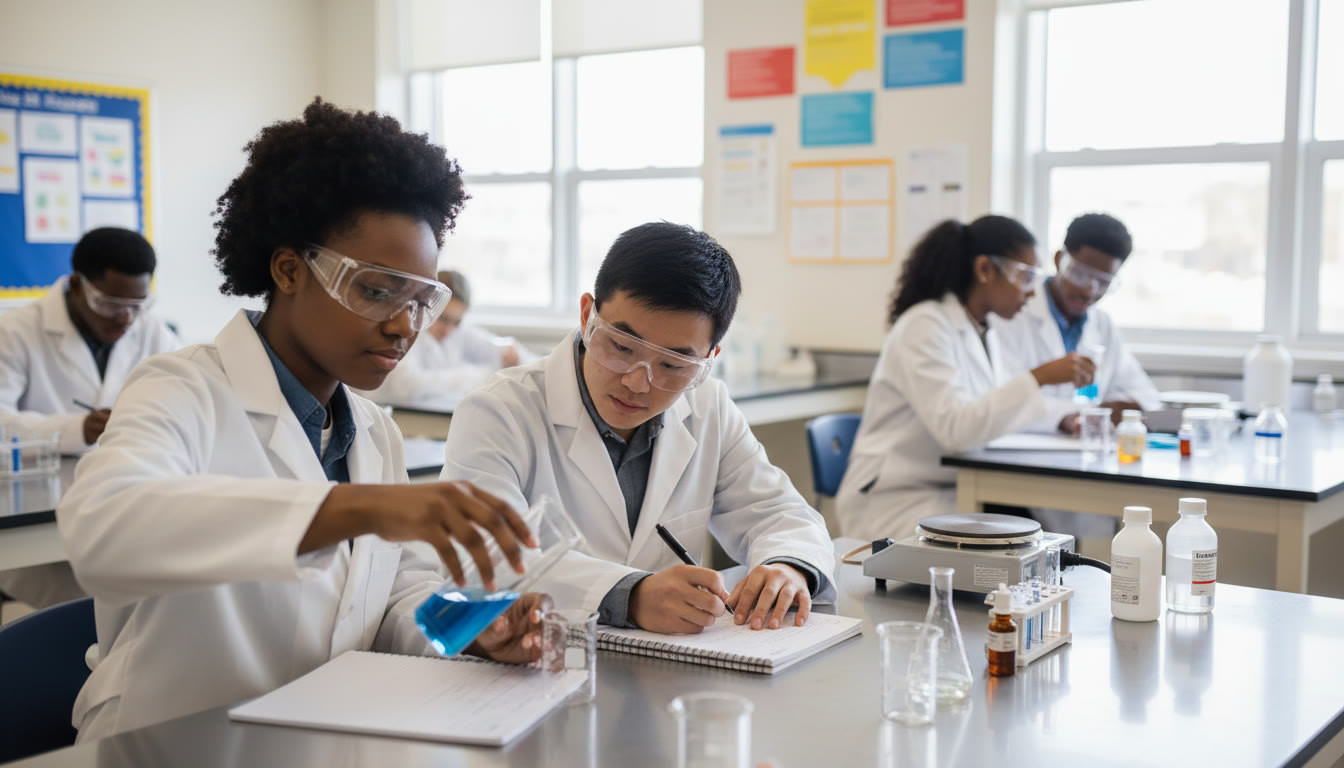
Core Safety Practices Every AP Lab Should Have
Safety isn’t just rules on a poster. It’s a culture. The simplest way to start building that culture is to treat every student as someone who can both make discoveries and make mistakes. Below are core safety practices that should be in place before students begin AP-level investigations.
Essential Safety Elements
- Formal Safety Training: All students should complete an orientation that covers PPE (personal protective equipment), emergency procedures, and proper waste disposal before their first lab.
- PPE Readily Available: Safety goggles, gloves of multiple sizes, lab coats or aprons, and face shields when needed.
- Clear Emergency Procedures: Fire extinguisher, eyewash, safety shower, first-aid kit, and clear evacuation routes with signage.
- Teacher Preparedness: At least one staff member trained in first aid and chemical spill response on-site during labs.
- Risk Assessment Culture: Students should practice identifying hazards and determining how to mitigate them as part of their lab work.
Promoting Student Responsibility
In AP courses, students are expected to show scientific thinking. Part of that is anticipating experimental risks and defending choices in write-ups. Encourage students to write brief pre-lab risk assessments in their notebooks and to include a step in their planning where they identify at least two mitigation strategies for each hazard.
Comprehensive Equipment Lists: By Course
Each AP science course has overlapping needs and some distinct items. The list below is practical and intentionally broad so schools can adapt to class size and local budgets. Use it as a starting template—then prioritize critical items that unlock inquiry-based labs.
Shared Core Items for AP Science Labs
- Safety goggles (ANSI-rated), disposable gloves in multiple sizes, lab aprons
- First-aid kit, eyewash station, chemical spill kit, fire extinguisher
- Balances (analytical and top-loading), graduated cylinders, pipettes, burettes, micropipettes with tips
- Hot plates, Bunsen burners or safe heating alternatives, ring stands, clamps
- pH meters and pH paper, thermometers (digital), stopwatch/timers
- Glassware: beakers, Erlenmeyer flasks, test tubes, watch glasses
- Consumables: distilled water, common reagents, culture plates, filter paper, tubing
- Computers or tablets for data collection and analysis, spreadsheets and graphing tools
AP Biology Specific
- Compound microscopes (one per small group) with prepared slides and staining kits
- Dissection kits, specimen storage containers, centrifuge (if available)
- Incubators, micropipettes, gel electrophoresis apparatus (for genetic labs)
AP Chemistry Specific
- fume hood for volatile or hazardous reagents
- Volumetric glassware, titration setups, standardized solutions, conductivity probes
- Appropriate waste containers and labels for acids, bases, organic solvents
AP Physics Specific
- Motion sensors, force sensors, data loggers, photogates
- Mass sets, springs, pulleys, inclined plane setups, circuit components (resistors, capacitors, breadboards, power supplies)
AP Environmental Science Specific
- Sampling equipment (soil cores, water sampling kits), test kits for nitrates/phosphates
- GPS or smartphone-enabled location tags, simple biodiversity survey tools
Sample Equipment Inventory Table (Per 24-Student Section)
| Item | Quantity (for ~24 students) | Notes / Purpose |
|---|---|---|
| Compound Microscopes | 6–8 | Use in pairs for lab rotations; covers Biology investigations |
| Analytical Balance | 2 | Precision mass measurements for Chemistry and Physics |
| Hot Plates | 4 | Safer alternative to burners for many AP experiments |
| pH Meter | 2 | Accurate readings for environmental and chemistry labs |
| Micropipette Set | 3 sets | Essential for precise liquid handling in Biology and Chemistry |
| Safety Goggles | 30+ | Multiple sizes; one per student plus spares |
| Fume Hood | 1 | Required for volatile reagents and certain titrations |
The table is a realistic starting point; schools with larger classes can scale quantities proportionally. Schools should also budget for consumables and replacements—pipette tips, reagent bottles, bulbs, and batteries add up quickly.
Aligning Your School Board Lists with AP Course Audit Expectations
AP uses a Course Audit process to confirm that a school’s proposed AP course meets the curricular expectations. One element reviewers look for is evidence that the course provides opportunities for inquiry and hands-on experiences. A clear, well-documented equipment and safety list signals that the school can deliver those experiences.
Steps to Create an Audit-Ready Equipment List
- Map required investigations and activities from the AP course guide to specific items. For each lab, note the essential equipment and safety considerations.
- Include quantities and an expected lifespan or replacement cycle for consumables.
- Document safety training plans: orientation checklists, verification signatures, and emergency procedure postings.
- Show how labs will be scheduled to ensure equitable access—rotation plans or lab station designs help reviewers see the logistics.
When educators prepare this documentation, they often discover gaps they can address proactively rather than during an audit. That’s a win for students, because gaps are exactly what prevent some classrooms from running higher-level experiments.
Practical Tips for Teachers: Make Labs Accessible and Sustainable
Stretch tight budgets and still provide meaningful experiences by designing experiments that are modular and reuse-friendly. Here are classroom-tested strategies that keep costs down without sacrificing depth.
Reuse, Replace, Reimagine
- Use shared sensor kits or data-loggers that plug into a single class computer and rotate across groups.
- Design multi-week projects where consumables are used across cohorts instead of one-off demos.
- Borrow or pool specialty equipment across departments (e.g., a single advanced spectrophotometer shared between AP Chemistry and AP Biology).
Build Student Agency
Students learn faster and behave more safely when they feel ownership of the lab. Try letting students help budget for consumables in project proposals, or assign roles—safety officer, equipment manager, data lead—on lab teams. This mirrors college lab culture and prepares students for independent research.
Assessment and Documentation: Showing What Students Know
AP courses value scientific practices: asking questions, designing investigations, collecting and interpreting data, and communicating results. Good documentation shows not just that an experiment happened, but how students reasoned through it.
What to Collect and Keep
- Lab notebooks with dated entries and reflective comments
- Data sets and plots—raw and processed
- Short experimental design proposals and post-lab reflections
- Photos or time-lapse logs for long-term experiments (with clear consent if they include faces)
For students applying to colleges that ask for lab experience, having a tidy portfolio of experiments—complete with photos, analyses, and reflections—can be a powerful addition to applications.
Common Challenges and Smart Solutions
Even well-intentioned schools face constraints: budget limits, aging labs, or inconsistent scheduling. Here’s how to address the most common challenges practically and creatively.
Challenge: Limited Budget
Solution: Prioritize safety and core measurement tools first (balances, thermometers, PPE). Use low-cost alternatives for demonstrations and virtual simulations for advanced or hazardous setups when a live experiment would be unsafe or prohibitively expensive.
Challenge: Shared Facilities and Scheduling
Solution: Create a visible booking calendar and plan labs several weeks in advance. Use flipped-lab models where students watch preparatory demonstrations or videos at home and spend class time on critical hands-on tasks.
Challenge: Ensuring Every Student Gets Hands-On Time
Solution: Design labs in stations and rotate groups so that every student has measured interactions with the equipment. Complement practical time with data analysis tasks for groups waiting at stations.
How Personalized Tutoring Can Bridge Gaps
Not every student comes to AP courses with the same lab experience. Targeted support—especially early in the course—can prevent small misunderstandings from becoming big obstacles. Personalized tutoring programs, like Sparkl’s, can be particularly helpful when tailored to hands-on courses.
Here’s how individualized support helps:
- 1-on-1 guidance to reinforce lab techniques (e.g., pipetting, titration, microscope handling).
- Tailored study plans that identify gaps—whether in math skills for data analysis or conceptual foundations for interpreting results.
- Expert tutors who can walk students through pre-lab planning, safety assessments, and post-lab write-ups.
- AI-driven insights that highlight common mistakes and suggest practice exercises for specific skills.
Integrating targeted tutoring into a school’s AP program can be done on a volunteer basis, during study halls, or as part of a formal support offering for students who want extra practice before high-stakes assessments.
Real-World Examples: Turning Constraints Into Opportunities
Case 1: A small district couldn’t afford a fume hood. Instead, teachers reworked labs to focus on micro-scale chemistry techniques that use far smaller reagent volumes and pose less vapor risk. Students still practiced titration, qualitative analysis, and stoichiometry—skills vital to AP Chemistry—while minimizing hazardous exposures.
Case 2: An urban school with limited bench space adopted a blended model. Students completed pre-lab concept checks and simulation exercises online, then attended weekly rotating lab sessions to complete the physical steps. The result: deeper conceptual readiness and higher-quality lab reports.
Checklist: Preparing for an AP Lab Session
- Pre-lab reading completed and pre-lab quiz passed.
- All PPE fitted and functional.
- Emergency equipment checked and visible; teacher reviewed emergency plan.
- Equipment inventory verified—enough pipettes, tips, and sample materials for each group.
- Waste disposal containers clearly labeled.
- Student roles assigned for smooth execution and accountability.
Final Thoughts: Building a Strong, Sustainable AP Lab Program
AP labs are more than a set of experiments. They’re the place where theory meets practice and where students learn to think like scientists: careful, curious, and accountable. When school boards provide clear equipment lists, robust safety practices, and equitable access to tools, students can fully engage with inquiry-based learning and meet AP expectations with confidence.
Teachers and administrators should treat lab readiness as a living document—revisit inventories each year, solicit student feedback, and plan incremental upgrades. For families, supporting your student’s lab learning means encouraging meticulous note-taking, asking about safety procedures at home, and, where helpful, exploring targeted tutoring to shore up foundational skills. Programs that offer personalized tutoring and tailored study plans—like Sparkl’s—can provide students with the lab technique practice and conceptual support that make AP work more accessible and enjoyable.
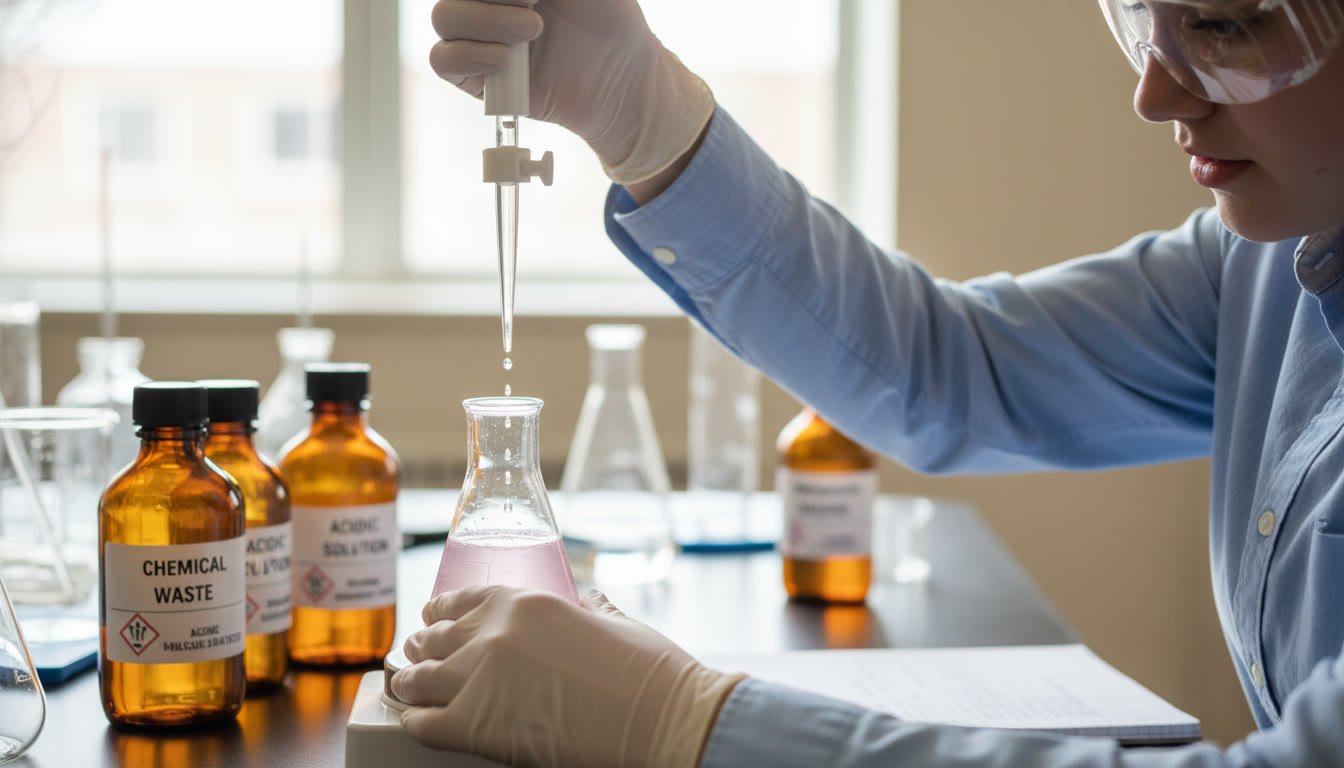
Next Steps for Schools, Students, and Parents
For schools: start by mapping your current inventory against the course’s lab manual and the needs of guided inquiry labs. Prioritize safety infrastructure, then procurement of items that unlock inquiry-based investigations.
For students: focus on mastering a handful of core techniques early—accurate measurement, safe handling of materials, and clear lab notebook habits. These skills pay dividends across every AP science course.
For parents: ask about the school’s lab safety orientation and how equipment is maintained. If your student needs extra practice, consider targeted tutoring to build confidence in both procedures and data interpretation.
Closing Note
AP-level labs are ambitious, and rightly so: they ask students to do work that mirrors college science. With thoughtful equipment lists, practical safety systems, and supportive learning structures—not to mention occasional targeted tutoring—students can meet those expectations safely and succeed spectacularly. The payoff isn’t just a higher AP score; it’s the development of scientific thinking, curiosity, and a set of practical skills that last a lifetime.

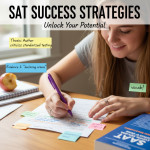


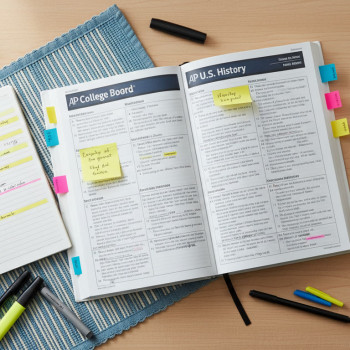
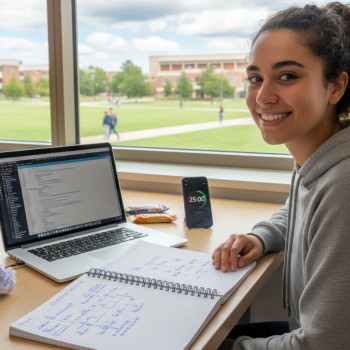
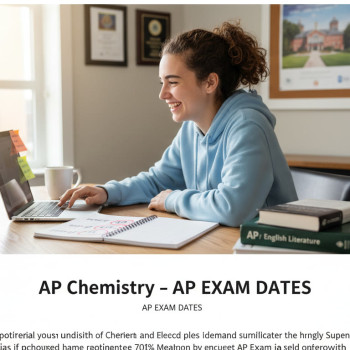
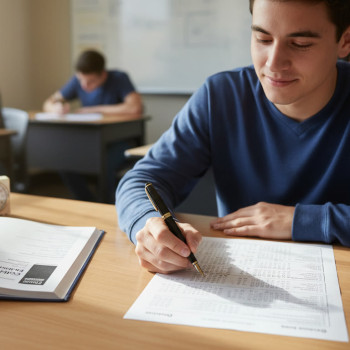











No Comments
Leave a comment Cancel